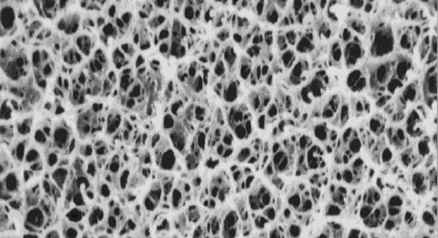Chitin is a promising biomass resource, and an estimated 100 billion tons are produced annually on Earth by chitin-biosynthesizing organisms, such as crabs, shrimp, squid, rhinoceros beetles, crickets, and shiitake mushrooms. Its structure is a linear chain of N-acetylglucosamine (GlcNAc) linked via β-1,4-glycosidic bonds that form numerous intra- and intermolecular hydrogen bonds, resulting in a highly crystalline fiber structure. Currently, research on biorefinery processes utilizing the structural properties and biofunctions of chitin is being actively conducted by many researchers from the environmental, resource, and energy issue perspective in a wide range of fields, including molding, veterinary and pharmaceutical materials, biotechnology, cosmetics, food, agriculture, forestry, fisheries, and industry. However, considering the potential of chitin as biomass, its utilization is currently insufficient. This is because chitin has a lower solubility in common organic solvents compared to cellulose, a woody biomass, which reduces its processability and usability. As part of our research on chitin biorefinery, our group is focusing on chitin decomposition products, which are more soluble in water than chitin and have significantly improved processing properties. Chitin decomposition products are mixtures of GlcNAc and chitin oligosaccharides (degree of polymerization 2 to 6) that are industrially produced from chitin. In this article, we introduce the part of our research focused on the utilization of chitin decomposition products as biomass resources: our studies on the reconstruction of in vivo glycans and the creation of biofunctional molecules. ...and more
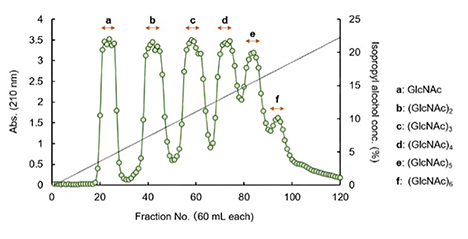
Chitosan is obtainable from chitin, an abundant polysaccharide, and has high biocompatibility and biodegradability. Therefore, chitosan can be used as biomaterials. Chitosan is soluble in acidic aqueous solutions and acts as a polycation. In this article, we describe a method for utilizing chitosan as structural materials (i.e., polysaccharide composite films obtained by molding polyion complexes that are formed by mixing chitosan and anionic polysaccharides). The polysaccharide composite films possess functional features such as the ability to load drugs, absorb moisture, and retain moisture, indicating that they could be useful as biomaterials in applications such as drug sustained-release carriers and wound dressings. ...and more
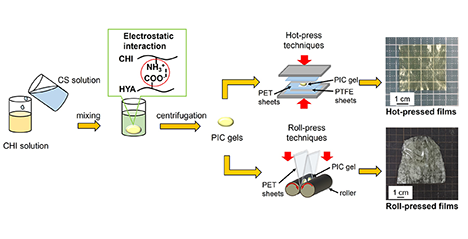
Chitosan is widely known to accelerate wound healing. Therefore, various wound dressings based on chitosan have been reported. Although hydrogel-type wound dressings are suitable for moist wound healing, it is difficult to develop hydrogel-type chitosan wound dressings due to two reasons. When we prepare chitosan hydrogels, chitosan first needs to be dissolved in water. However, since chitosan dissolves only in acidic water, the resulting hydrogel is also acidic, making it unsuitable for application to wounds. In addition, the polymer dissolved in an aqueous solution needs to be cross-linked with chemical cross-linkers to form hydrogels. However, because chemical cross-linkers are highly toxic, hydrogels containing them are not suitable for medical applications. Here, we describe our chitosan hydrogels exhibiting neutral pH and containing no additives, which are prepared by freeze-thawing or autoclaving chitosan aqueous solutions without using chemical cross-linkers. ...and more
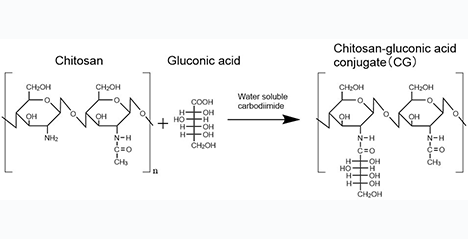
Using only water as solvent for purification of chitin and preparation of chitin materials is a new green technology. We propose a new method of chitin preparation without acid/base catalysts or organic solvents that can be achieved through the regulation of water temperature and pressure. ...and more
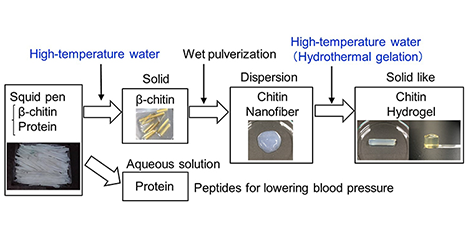
Chitinases (EC 3.2.1.14) catalyze the hydrolysis of chitin, which is a β-1,4-linked homopolymer or oligomer of N-acetyl-D-glucosamine (GlcNAc). Many researchers accept that one of the physiological roles of these chitinases is to protect plants against fungal pathogens by degrading chitin, a major component of the cell wall of many fungi. There is strong correlative evidence that low constitutive activity of chitinase found in many plants can be dramatically induced by infection with fungal pathogens. And chitinases with antifungal activity have been reported in bacteria. Not all chitinases exhibit antifungal activity, and rather few chitinases with strong antifungal activity have been reported. In this review, we will summarize what is known so far about the relationship between the structure and antifungal activity of chitinases, focusing on the results of our research. Elucidation of the correlation between chitinase structure and antifungal activity is expected to contribute to the understanding of plant defense systems, breeding of pathogen-resistant crops, and development of antifungal agents. ...and more
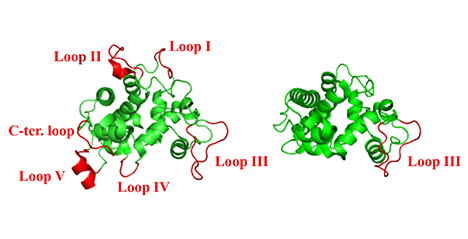
Hydrogels can generally be synthesized from chitosan by physical cross-linking or chemical cross-linking, but the chemical cross-linking method is simpler to use and yields a structurally more stable product. Chemical cross-linking agents such as glutaraldehyde and epichlorohydrin are widely used for the preparation of polysaccharide-based hydrogels, but there are concerns about environmental and biological toxicity. Although natural cross-linking agents such as genipin, which is a chemical compound found in Genipa americana fruit extract, are available, their industrial use is limited by cost. Recently, it was reported that polyaldehydes, obtained by oxidizing polysaccharides or oligosaccharides, can be used as a cross-linking agent, and their biological safety and other properties are being confirmed. In this article, we focus on oxidized sucrose (OS), which is obtained by oxidative cleavage of inexpensive sucrose, and its molecular structure and properties as a cross-linking agent for chitosan and its derivatives. ...and more
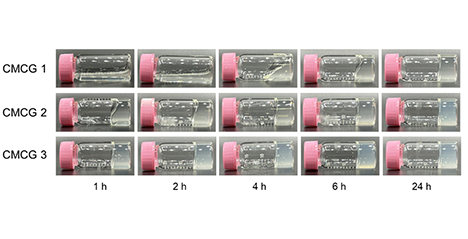
Chitooligosaccharides produced by degrading chitin or chitosan possess attractive biological activities such as anti-bacterial, anti-tumor and anti-inflammatory effects. The use of enzymes in the production of chitooligosaccharides may increase their value in terms of safety and simplicity of process control. We have shown that the monkey expresses a high level of CHIA mRNA in the stomach. Crab-eating monkey CHIA had robust chitinolytic activity under a broad range of pH conditions with high thermal stability. In addition, crab-eating monkey CHIA efficiently degrades chitin and chitosan to produce chitooligosaccharides under acidic and high-temperature conditions without inactivation. We propose crab-eating monkey CHIA for application in agricultural and biomedical purposes. ...and more
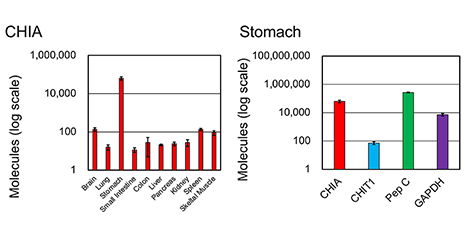
Chitin, like cellulose, is one of the most abundant organic materials on earth. However, most of it is unutilized as a practical material due to its crystalline structure, which is highly fibrous, and its extended molecular chain packing, which is stiffened by numerous intra- and intermolecular hydrogen bonds. Particularly acetamido groups in repeating N-acetyl-ᴅ-glucosamine units form quite strong intermolecular hydrogen bonds, posing more serious solubility and processability problems than does the hydrogen bond structure of cellulose. Recently, ionic liquids have been identified as media suitable for the fabrication of chitin-based soft materials. This article summarizes the contributions made to the development of soft-materials from chitin, such as flexible, thermoplasticized materials, and so on, through dissolution and gelation in ionic liquids. ...and more
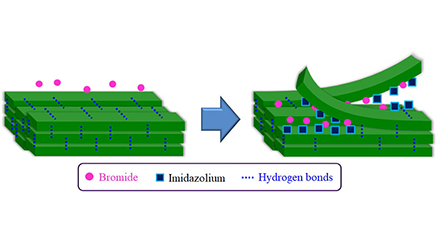
The polysaccharide, chitin, is the main component of crab shells, which is an abundant biomass. But it has poor solubility, so it is rarely used. Recently, a mechanical treatment technique for converting chitin into "nano-chitin" has been developed. Nanochitin is a fine fibrous substance with a width of about 10 nm and uniformly dispersible in water, so it is easy to process. Since it is also possible to search for functions, various functions have been clarified. Nanochitin has an effect on the skin, an effect associated with oral administration, and an effect on plants sprayed with it. It is expected that the utilization of the new materials derived from these unused resources will be promoted by clarifying unknown potential functions. ...and more

Chitin and chitosan, the structural polysaccharides that support the exoskeletons of marine organisms such as shrimp and crabs, are the second most abundant biomass after cellulose, but are yet to be fully utilized as natural resources. Various approaches to create high value-added materials using chitin and chitosan have been evaluated, and potential strategies for giving such materials greater functionality include chemical modification and increasing the complexity of shape or structure. In this paper, I will describe a method for preparing a new functional material by forming chitosan into microparticles and combining them with an inorganic material, calcium carbonate. ...and more
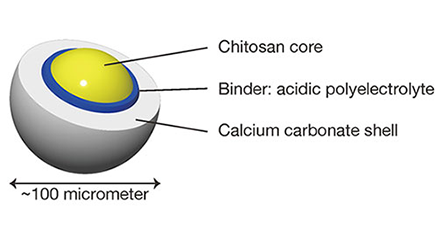
Various biological functions of chitin and chitosan, polysaccharides contained in crab shells, are known. Many studies conducted during the past 50 years have indicated the efficiencies of chitin and chitosan for wound healing. At present, wound dressings made from chitin are also used in the medical field. Here, the wound-healing effects of chitin and chitosan are explained. ...and more
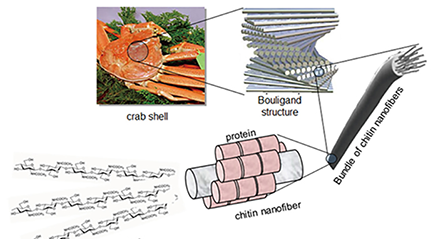
The natural polysaccharides chitin and chitosan are mucopolysaccharides that are extracted mainly from crab shells and shrimp shells. Both chitin and chitosan have high affinity to the living body and have been extensively studied in various fields. They also have interactions with microorganisms and thus research extends to the agricultural and food realms all over the world. Chitin and chitosan are each found not only in solution form, but also in the form of fibers, porous beads, and sponges, depending on the usage. As the research on chitin and chitosan nanofibers is progressing with cutting-edge technology, the effects of size and specific surface area on expanding the possibilities of application are highly expected. ...and more
